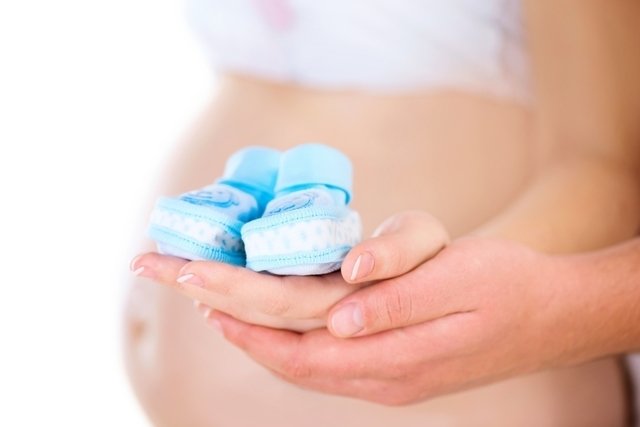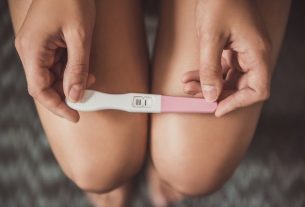The father is the one who determines the sex of the baby, because he has gametes of type X and Y, while the woman has only type father, to obtain a baby with the XY chromosome, which represents a boy. Therefore, sperm carrying Y gametes must penetrate the egg, instead of X sperm, to ensure the development of a boy.
To this end, there are some tips proven by science that can increase the chances of a Y sperm reaching the egg, however, they are not 100% effective and can, even so, give rise to a girl. If you are trying to have a girl, check out our other content with methods for getting pregnant with a girl.
Still, couples who want to have a specific boy can try the scientifically proven tips, since, even if they end up not working, they do not affect the health of the woman or the baby.

Science-proven strategies
There are not many studies known about the influence of external factors on the baby’s sex, other than genetics. However, of those that exist, it is possible to highlight 3 strategies that seem to increase the chances of having a boy:
1. Having sex close to ovulation
According to a study carried out in the Netherlands in 2010, the closer sexual intercourse occurs to ovulation, the greater the probability of having a boy, as type Y sperm swim faster than type X sperm, reaching the egg sooner. . This means that sexual intercourse should only happen the day before ovulation or on the day itself, during the first 12 hours.
Intercourse should also not take place too long before ovulation, as Y sperm, although they are faster, also seem to have a shorter lifespan, which means that, if intercourse takes place a long time before, only X sperm will be alive. at the time of fertilization.
How to make: the couple should have sexual intercourse just 1 day before ovulation or the day itself, up to 12 hours after.
2. Increase your potassium and sodium intake
Potassium and sodium are two important minerals that also appear to be related to the chances of having a boy. This is because in a study carried out in the United Kingdom, with more than 700 couples, it was identified that women who had a diet richer in sodium and potassium seemed to have a greater number of children, while women who ate a diet richer in calcium and magnesium, had a greater number of daughters.
This result was further confirmed in a study carried out in the Netherlands, in 2010, and another in Egypt, in 2016, where women who ate a diet richer in potassium and sodium had success rates of over 70% in having a boy. Therefore, researchers stated that increasing the consumption of foods rich in these minerals, as well as taking supplements, can help a woman have a boy.
Although the mechanism by which food appears to influence the baby’s sex is not known, the study carried out in Egypt suggests that mineral levels may interfere with the egg membrane, increasing attraction to type Y sperm.
How to make: women can increase their consumption of foods rich in potassium, such as avocados, bananas or peanuts, as well as increase their sodium intake. However, it is important to be careful with excessive sodium consumption, as it can result in increased blood pressure and hypertension, as well as complications in future pregnancy. Therefore, the ideal is to make adjustments to your diet under the supervision of a nutritionist. See a list of the main foods with potassium.
3. Have sex on the peak day or in the following 2 days
The peak day is a concept that was introduced with the Billings, which is a natural way of evaluating a woman’s fertile period through the characteristics of vaginal mucus. According to this method, the peak day represents the last day on which vaginal mucus is at its most liquid and occurs approximately 24 to 48 hours before ovulation. Understand better what the method of Billings.
According to a study carried out in Nigeria in 2011, having sex on the peak day or in the following 2 days appears to increase the chances of having a boy. This method is in line with the strategy of having sex close to ovulation, as the peak day occurs around 24 hours before ovulation.
The explanation behind this method also seems to be related to the speed of type Y sperm, which seem to reach the egg faster. As with the ovulation method, intercourse should not take place before the peak day, as Y sperm may not survive to fertilize the egg, leaving only type X sperm.
How to make: the couple should prefer to have sex only on the peak day or during the following two days.

Strategies without scientific proof
In addition to the strategies that have been studied, there are also other popularly known strategies that do not have any type of proof or that have not yet been studied. These include:
1. Eat more red meat
Several studies indicate that in fact a woman’s diet can affect the baby’s sex, however, the main studies are related to the consumption of some specific minerals, such as calcium, sodium, magnesium or potassium, and there is no evidence that the consumption of red meat may increase the chances of having a boy.
Although some red meats, such as veal, beef or lamb may indeed have higher composition and potassium, they are not the best option for health, and preference should be given to other foods such as avocado, papaya or peas. Still, any change to the diet should always be carried out with the help of a nutritionist.
2. Reaching climax at the same time as your partner
This popular method is based on the idea that during climax the woman releases a secretion that helps the sperm carrying the Y gametes to arrive first and penetrate the egg. However, there are no studies that relate the moment of climax to the baby’s sex, and it is not possible to confirm this method.
3. Use the Chinese table
The Chinese chart has long been used as a popular, home-based method for selecting a baby’s sex. However, a study carried out in Sweden between 1973 and 2006 did not find any effectiveness in using this method to predict the baby’s sex, even after evaluating more than 2 million births.
For this reason, the Chinese table is not accepted by the medical community to predict the sex of the baby, even after the woman becomes pregnant. Check out more about the Chinese table theory and why it doesn’t work.
4. Position to get pregnant with a boy
This is another method that has not been studied but is built on the idea that having sexual intercourse in positions where penetration is deeper leads to a higher rate of having a boy, as it facilitates the entry of Y sperm.
However, as there are no studies carried out using this method, it is not considered a proven means.

Sign up for our newsletter and stay up to date with exclusive news
that can transform your routine!
Warning: Undefined array key "title" in /home/storelat/public_html/wp-content/plugins/link-whisper-premium/templates/frontend/related-posts.php on line 12
Warning: Undefined array key "title_tag" in /home/storelat/public_html/wp-content/plugins/link-whisper-premium/templates/frontend/related-posts.php on line 13



